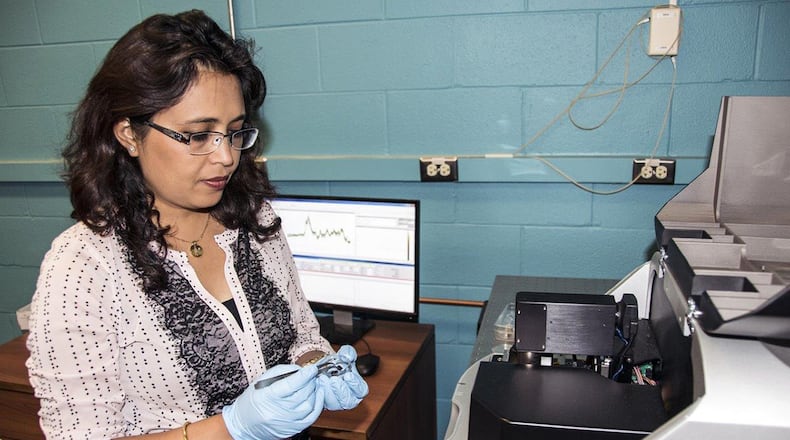Przybyla said the team accomplishes their efforts through material structure quantification, highly instrumented mechanical testing and physics-based modeling for material performance.
Through in-house developed, physics-based modeling techniques, the team determines how materials will behave under specific application environments – including extreme environments – that are relevant to current and emerging Air Force platforms. These models also aid in predicting material degradation and consequent damage initiation and growth over time.
This predictive ability helps designers and maintainers develop better materials for highly demanding applications, define maintenance cycles more accurately and evaluate effects of processing or in-service induced damage on system performance.
As a result, aircraft designers will be able to avoid over-conservative or inefficient design, more accurately predict component life, and more effectively evaluate in-service issues that arise during system life.
Przybyla said the emergence of multifunctional composites is an area that poses new challenges for the team. Specifically, in addition to characterizing structural performance, his team must now understand how functional performance factors tie in as well. By understanding a material’s functional factors such as thermal and electrical properties, researchers can better understand if new multifunctional composites are viable for demanding Air Force applications under a variety of structural and functional loading conditions.
“For instance, hypersonics is an extremely challenging aero-, thermal- and mechanical-loading scenario. We’re helping close the design envelope with existing materials through our physics-based testing, so that when others go out and design a vehicle, they can do that with confidence that it’s going to meet the mission requirements with more limited test programs than have been required in the past,” said Przybyla.
The software codes, modeling tools and databases the team produces benefit aircraft designers and system program offices who seek to develop and field aircraft systems with a high degree of safety and longer intervals between required maintenance. Some of the customer organizations the team works closely with include the Air Force Life Cycle Management Center and system program offices for various platforms as well as the Army, Navy and other AFRL technical directorates.
Przybyla said his team employs innovative thinking to overcome the special challenges associated with modeling and characterizing composite materials. He said a number of factors come into play, including the many variables and nuances the team has to consider when evaluating a material and how it will behave under given conditions, with other materials, and in different applications. Also, the team must consider how to model for extreme environments, such as those encountered in hypersonic flight, as those conditions are virtually impossible to replicate in a laboratory environment.
“We encounter challenges, but we’ve had a lot of successes as well, including partnering with key organizations that really have found our tools enabling for their goals,” Przybyla said.
A prime example of this type of partnership is a recent project for a program office that was having challenges with a specific Air Force weapons system. The Composites Performance team’s damage progression modeling tool, called BSAM, helped the office understand how the operating conditions were causing failure in a particular component of this system.
Specifically, the predictions made using BSAM enabled the failure load to be estimated based on the mission profile of the system. Przybyla said the program office was able to rewrite operational rules based on the analysis, allowing for the continued use of this critical Air Force system.
In fact, the team comes to the aid of many organizations with exactly the right tools for the job. The team recently responded to a need within the hypersonics community by providing a database of performance parameters for a key set of existing, available ceramic composites. Essentially, it is a data library that current system developers can use to quickly screen currently available candidate materials and determine viability of various design concepts based on these materials.
“We’ve been a trusted source to provide materials data essential to helping hypersonics programs move forward in a reasonable time and on a reasonable budget,” Przybyla said.
When Przybyla looks toward the future, he sees continued growth and advancements in composites modeling. He said the team is looking toward the transition of the BSAM physics-based damage prediction model to industry. To make that happen, they will work toward making it optimized for larger-scale, system-level problems. He said the team will also continue to take steps toward the advancement of physics-based damage progression models for ceramic composites, something that is of great interest to the Air Force in light of the impressive safety record of similar metallic materials modeling efforts.
Przybyla said his team’s work is all about changing the paradigm of the design and lifing of composite components, moving from an experimentally-driven, test-based approach to a more efficient, physics-based modeling approach with limited testing.
“We’re looking at design from a different prospective,” Przybyla said.
About the Author
